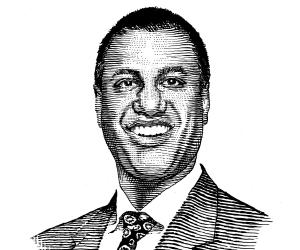Excerpts from our May 14 Extra Edition

We published our first-ever Extra Edition of Public Utilities Fortnightly on May 14. That was one day after the Federal Communications Commission's landmark order allocating part of the 900 megahertz band for private networks, by utilities particularly. FCC Chair Ajit Pai had this to say about this historic order:
Steve Mitnick: Since electric industry CEOs are concerned about resilience and cybersecurity, why it should matter to them that a private LTE network is air-gapped from the Internet?
Chair Ajit Pai: An important aspect of this 900 megahertz proceeding is the potential to enhance the security of this critical infrastructure. I have learned the importance of that over the course of my time at the FCC, and in part I've been educated by some of the leaders in the electric industry, including some who just a couple of months ago sat down with me and talked about the need to better secure this critical infrastructure. That's one of the reasons why I'm so excited about the 900 megahertz proceeding.
By creating a private LTE network, an electric utility is able to rely not on the public internet, which may have a vulnerability here or there, but rather a purpose-built private LTE network that can avoid those vulnerabilities.
That's one of the things that's going to ensure that our electric grid is going to be there at all times, reliable as every consumer expects it to be. I'm excited to see how the electric industry uses this 900 megahertz spectrum in order to boost cybersecurity efforts.
Steve Mitnick: Where does this 900 megahertz action fit into your overall plan for U.S. leadership in 5G and in technology and innovation?
Chair Ajit Pai: The 900 megahertz proceeding is an important component of our comprehensive strategy. We've called that strategy the 5G FAST Plan, a plan to Facilitate America's Superiority in 5G Technology.
That plan has three basic components. Number one is to push more spectrum into the commercial marketplace.
Number two is to update our wireless infrastructure policy to make it easier to deploy the small cells and other components of wireless networks going forward.
Number three, modernizing outdated regulations to promote fiber deployment.
The 900 megahertz proceeding is an important part of that first component, pushing more spectrum into the commercial marketplace. About two years ago, we originally identified this as one of the bands where we wanted to make progress back and we are now poised to bring to fruition that vision. And I'm pleased about not just what it will mean for the electric industry, but what it will mean for consumers overall.
At the end of the day, we want to make sure that these airways benefit the American public, and having an electric grid that is much more secure, much more resilient, that allows electric operators to protect against everything from public safety threats to enhancing the efficiency of their operations — those are things that ultimately will mean better, more reliable, cheaper electricity for American consumers. That's a message that is very consistent with the goals of the 5G FAST plan.



